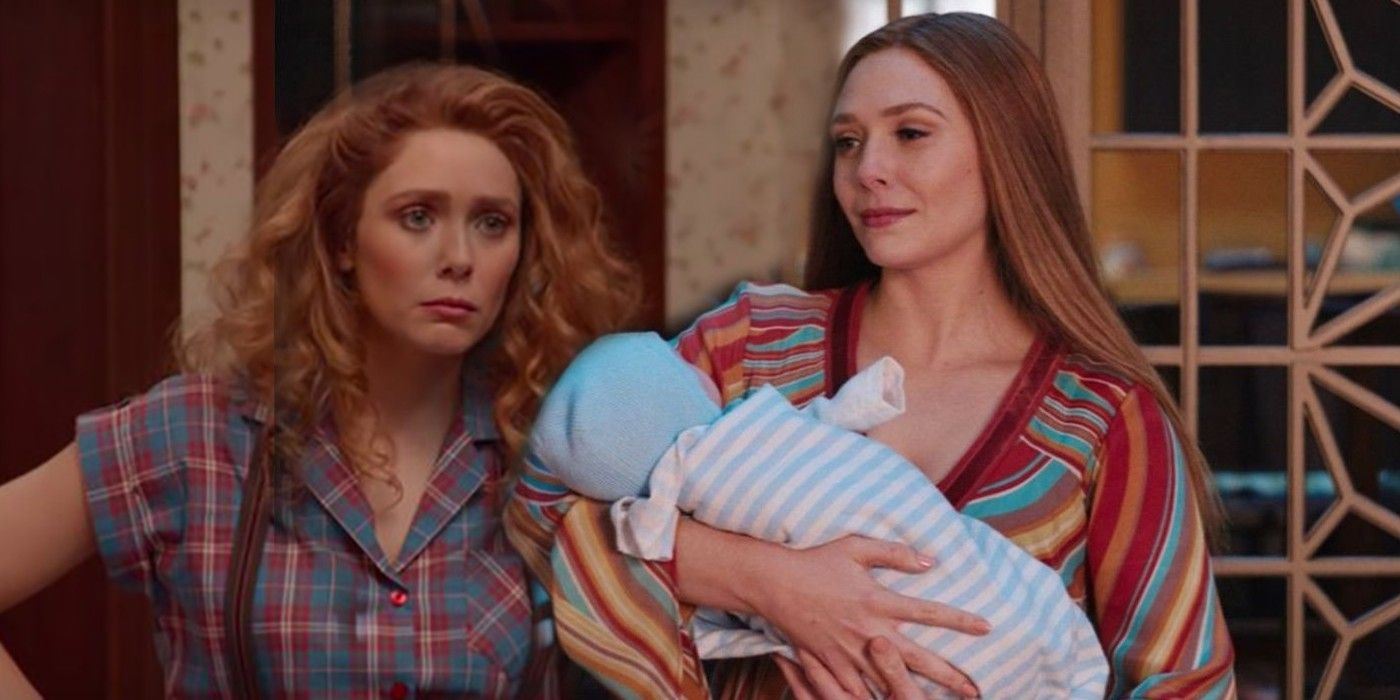WandaVision has fittingly used The Monkees song “Daydream Believer” in weekly promos, trailers, and episodes, but the original lyrics make even more sense with the show. The title of the song is an obvious nod to the prevalent theory that Wanda (Elizabeth Olsen) is dreaming up her idealized version of life with Vision (Paul Bettany), who died at the end of Avengers: Infinity War. But even though it’s possible that Wanda’s apparent control over Westview, NJ is a red herring, “Daydream Believer” still fits into WandaVision, especially since the original lyrics emphasize the underlying strangeness of suburban life.
The most well-known version of “Daydream Believer” is sung by The Monkees, but the song was written by the late musician John Stewart. Stewart said he wrote the song as part of a 'suburban trilogy' and didn’t think “Daydream Believer” was his best work, but it became a huge hit after Stewart sold the song to The Monkees. Stewart said in an interview with The Archives of Music Preservation that "Daydream Believer" was so popular that it not only paid the rent - it kept him alive. Fifty years later, the song has had a resurgence in popularity after featuring in the hit Disney+ show, WandaVision. However, it’s The Monkees’ version of "Daydream Believer" that plays in WandaVision, not John Stewart’s original song, which had slightly different lyrics.
The Monkees version of “Daydream Believer” includes the line, “Now you know how happy I can be,” but John Stewart’s original lyrics were "Now you know how funky I can be.” Stewart opened up about the altered lyric in several interviews, saying that the line changed the meaning of the song completely. “Now you know how funky I can be,” alludes to the awkwardness of newlywed life and the fact that our true selves are often a bit weirder than the public personas we adopt. As Stewart said, “You know, after the wedding how things can get funky?” [via American Songwriter].
This idea is especially tied to the American suburbs, where “keeping up with the Joneses” is a pervasive aspect of the culture that suppresses anything unusual or out of the ordinary for fear of drawing unwanted attention and gossip. Since this was also a core theme of many sitcoms through the '50s, '60s, and '70s, it makes total sense that WandaVision is set in a fictionalized sitcom version of the American suburbs. Fiction is often more comfortable and appealing than reality, which is why television audiences, the singer in “Daydream Believer,” and Wanda all want to escape their realities and live out their unmet expectations through sitcoms, daydreams, and artificial reality.
Ironically, the desire to supplant reality with fiction is exactly why The Monkees were forced to change Stewart’s lyrics in the first place. “Funky” was too weird and had too much of a negative connotation – like a bad smell. The record company, RCA, refused to let The Monkees use the original lyrics on their 1968 album, The Birds, The Bees & the Monkees. “Funky” was then changed to “happy,” effectively slapping a façade of perfection over the messy reality – which should sound rather familiar to WandaVision fans.
While the original version of “Daydream Believer” sounds almost tongue-in-cheek within the context of WandaVision (since Wanda is clearly not happy), the original lyrics of “Daydream Believer” perfectly describe the fact that the life Wanda wanted is nothing like the one she got. To cope, Wanda dreamed up a perfect, happy, suburban life, but, despite her best efforts, there’s something off – something “funky” – with the world of WandaVision and, as with Stewart’s description of newlywed suburban life, the cracks are starting to show.


